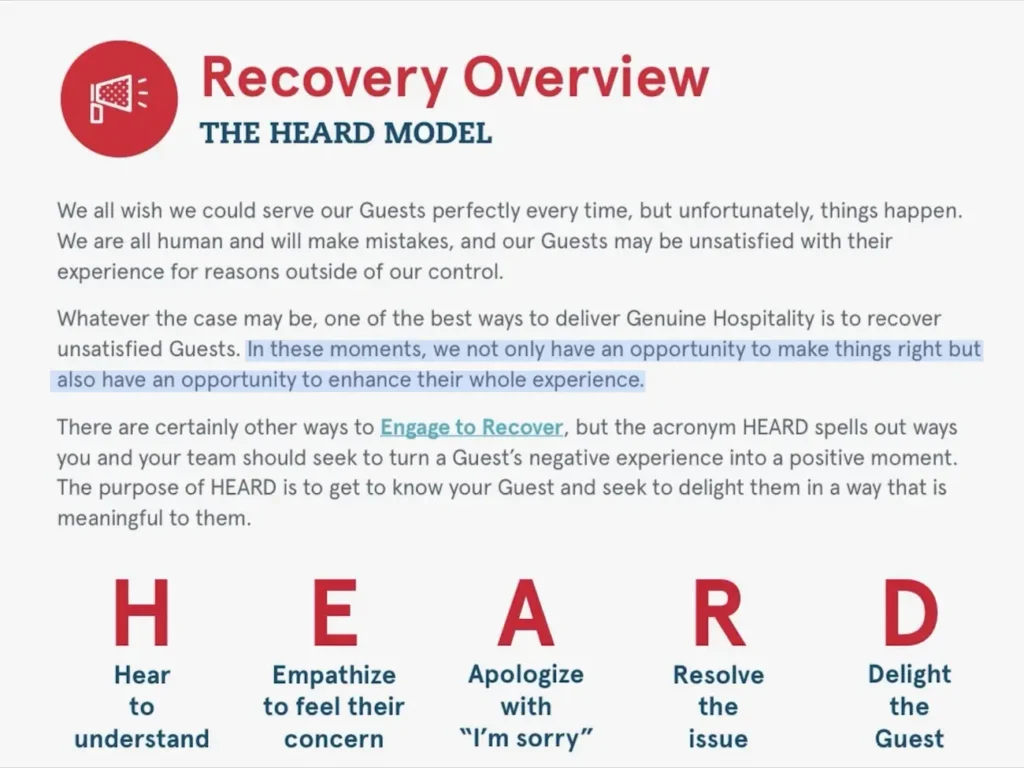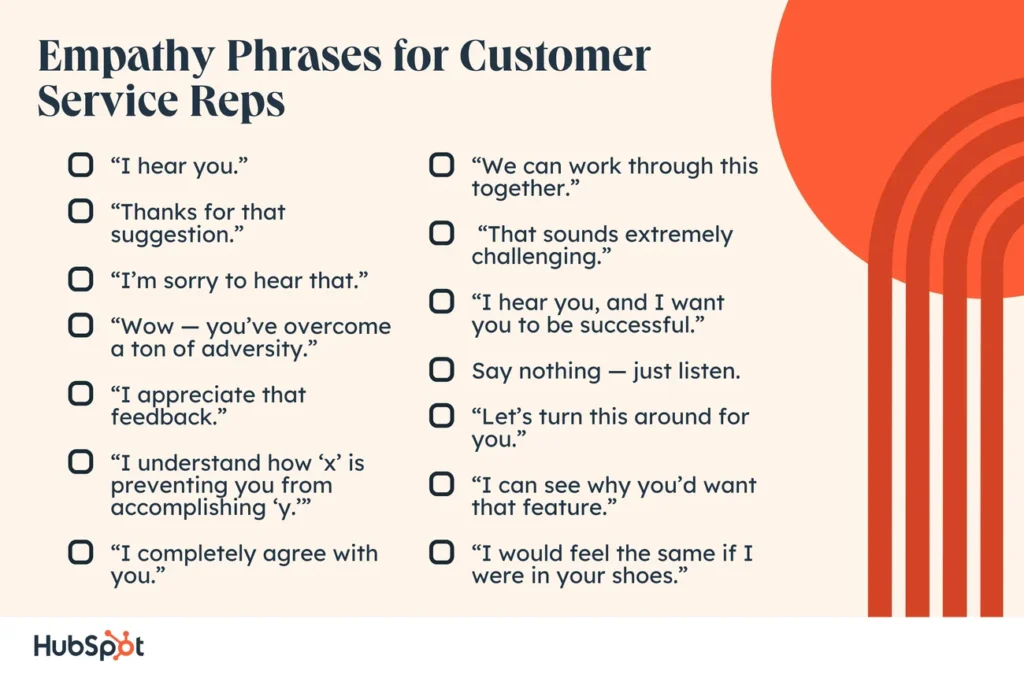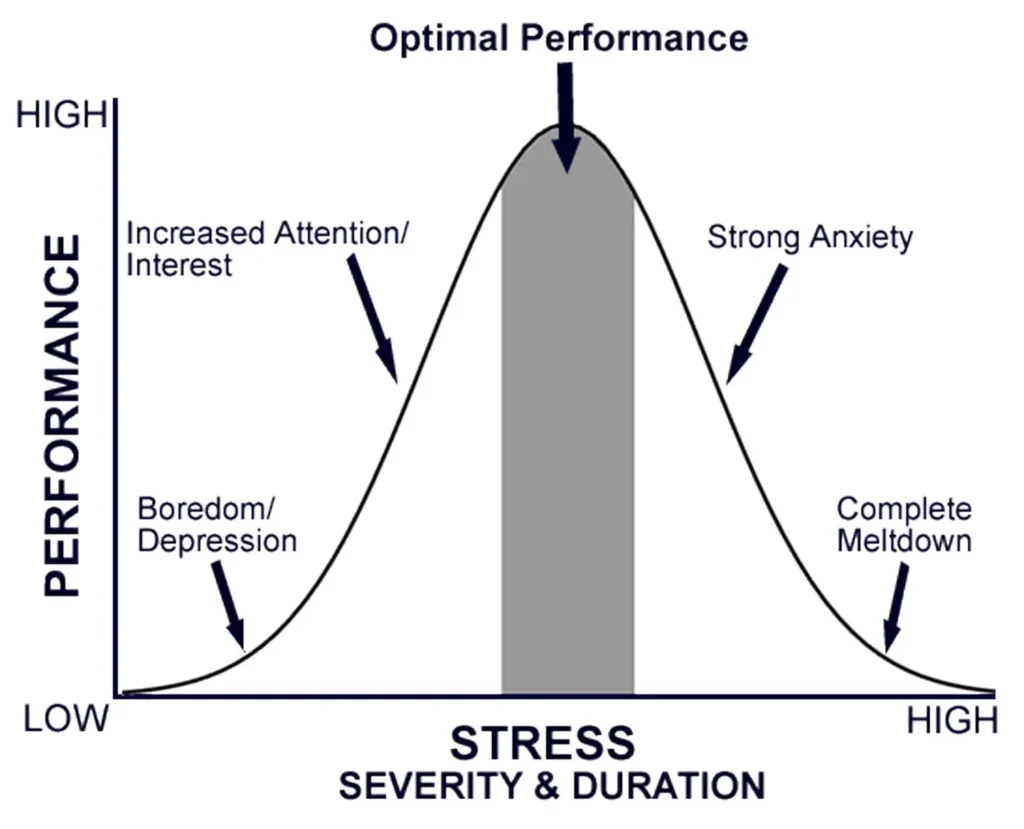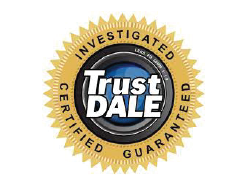
If you’ve ever worked in customer service, you know the unique challenge of dealing with an angry customer. From the hangry and indecisive to the downright demanding, you’ve likely encountered them all. While it can be frustrating, remember that many customers are simply having a bad day and may not be intentionally difficult. Here are some effective techniques to help you navigate challenging interactions with a mad customer.
What is the “HEARD” Technique in Customer Service?
Chick-fil-A, known for its top-notch customer service, trains its employees to prioritize listening and apologizing when dealing with unhappy customers. Internal training documents reveal that they use the HEARD model to de-escalate tense situations. This model, often attributed to the Walt Disney Company, focuses on hearing the customer, empathizing with their feelings, apologizing for the inconvenience, resolving the issue, and diagnosing the root cause to prevent future problems. Additionally, Chick-fil-A emphasizes its core values in training, including the signature phrase “my pleasure,” which reinforces their commitment to providing exceptional service.
The HEARD technique is a five-step process for effectively dealing with upset customers:
Following these steps, customer service representatives can de-escalate tense situations and provide positive customer experiences.

Reference: Luna, N. (2023, March 21). “Here’s the method Chick-fil-A workers use to keep their cool with angry customers.” Business Insider.
Customer: (Frustrated) “I’m so upset! I ordered a new phone last week, and it still hasn’t arrived! I’ve been waiting for days, and I need it for work!”
Customer Service Representative: (Calm and attentive)
Hear: “I completely understand your frustration, Mr./Ms. [Customer’s Name]. It sounds like you’ve been eagerly waiting for your new phone, and it’s inconvenient that it hasn’t arrived yet.”
Empathize: “I can imagine how frustrating it must be to be without your phone, especially when you need it for work. I’d feel the same way if I were in your shoes.”
Apologize: “I apologize for the delay and any inconvenience it’s caused. I know it’s not ideal, and we appreciate your patience.”
Resolve: “Let’s look into this right away. I’ll track your order and see what’s causing the hold-up. I’ll also expedite the shipping so you get it as soon as possible. Would you prefer it delivered to your home or work address?”
Diagnose: “Once we get this sorted out, I’d like to check our system to see why the delay happened in the first place. We want to make sure this doesn’t happen again to you or any other customers.”
Additional Notes for the Call Script:
Active Listening: Use verbal cues like “I see,” “I understand,” and paraphrase the customer’s concerns to show you’re actively listening.
Positive Language: Frame responses positively (e.g., “I’ll make sure to…” instead of “I can’t…”) to convey a can-do attitude.
Empowerment: Where possible, offer the customer choices to make them feel empowered (e.g., delivery options).
Follow-up: If applicable, offer to follow up with the customer to ensure the issue is fully resolved and they’re satisfied.
Dismissive phrases:
Blaming the customer:
Making excuses:
Being sarcastic or condescending:
Interrupting the customer:
Listen closely to what the customer is saying. Repeat back key points to show you’re understanding. Active listening helps customer service representatives accurately identify the root cause of a customer’s issue. Without a clear understanding of the problem, it’s impossible to provide an effective solution.
Customers appreciate being heard and understood. When representatives actively listen, they demonstrate that they care about the customer’s experience and are committed to resolving their issues.
Clarify, clarify, clarify. Miscommunication can lead to frustration and dissatisfaction. You can avoid misunderstandings and provide the correct information or solutions by listening carefully.
This technique works great with all interactions, including customers, friends, and family.
Empathy is a vital component of effective customer service. When you empathize with a customer, you show that you understand their feelings and perspective. This can help build rapport, validate their emotions, and demonstrate understanding.
By empathizing, you can create a more positive and cooperative environment. Customers who feel heard and understood are more likely to be satisfied with the interaction and more likely to return to your business in the future.

Reference: Barron, S. (September 25, 2023). “30 Empathy Phrases Customer Service Reps Should Use” Hubspot.
Even if the issue isn’t your fault, apologize for the inconvenience. The next step is to apologize and offer a solution. Even if you are not responsible for the customer’s issue, you can still express your regret and sympathy for their inconvenience.
This can help you diffuse the tension and show your sincerity. Then, explain what you can do to resolve their problem, or offer them some alternatives or options. Be clear and realistic about what you can and cannot do, and avoid making promises that you cannot keep.
Learn more about how to deal with an angry customer from this LinkedIn article, “What are some strategies to calm yourself down when dealing with rude or abusive customers?” powered by AI and the LinkedIN Community. The variety of responses on this article gives it a well-rounded view.
Work with the customer to find a solution. Be flexible and offer options.
Some Examples include:
Let the customer know you’ll follow up on their issue. Provide a timeline and contact information.
Keep your voice calm and avoid getting defensive, even if the customer is upset. Research shows a clear link between emotional control and high performance. 90% of top performers are adept at managing their emotions in stressful situations, according to a study by TalentSmart involving over a million people.
Helpful tips on how to handle difficult customers:

Reference: Bradberry, T. (December 10, 2021). “How Successful People Stay Calm” Forbes.
Give the customer time to express their feelings and concerns. Rushing to a solution without fully grasping the problem can lead to misunderstandings and further frustration for the customer. Taking a moment ensures you address the root cause, not just a symptom.
Allowing customers to explain their issues without interruption shows you value their time and concerns. It conveys that you’re genuinely interested in helping, not just trying to get them off the phone.
Hasty solutions can be incomplete or even incorrect. Taking a moment to gather information and consider options reduces the chance of errors that could worsen the situation.
Write down important details about the conversation, including the customer’s name, contact information, and the issue.
Notes ensure you have a precise account of the conversation, including the customer’s details, their concerns, and any actions or promises made. This helps avoid misunderstandings and disputes later on.
When dealing with multiple customer interactions, it’s easy to forget specifics. Notes serve as a reference point, helping you recall important details when following up or escalating the issue.
Taking notes demonstrates professionalism and a commitment to resolving the issue. It also helps you stay organized and focused during the conversation.
If the customer calls back or interacts with another agent, having notes on hand allows for a seamless continuation of service. This prevents the customer from having to repeat their story, showing them you value their time and concerns.
Reviewing notes can reveal recurring issues or patterns in customer complaints. This information can be used to identify areas for improvement, update training materials, or address underlying problems within the company.
Personalized service is a powerful tool for building customer loyalty. 90% of customers report spending more with companies that make them feel valued and understood. Start by using the customer’s name and introducing yourself. Then, go further by leveraging any info you may have about them to avoid making them repeat information and by tailoring your suggestions to their past purchases or preferences.
Don’t hesitate to request support when faced with challenging or emotionally taxing customer interactions. A colleague or supervisor can provide objective guidance, helping you navigate difficult situations and find effective solutions.
Managers may also have additional resources or connections to help resolve complex issues. Consider seeking assistance in these scenarios:
Understanding the underlying causes of customer frustration can empower your team to:
A knowledge management system is a valuable tool for facilitating knowledge sharing. Encourage employees to contribute their experiences and insights related to customer interactions, especially those involving angry customers.
The collaborative approach will equip your team with valuable information and enable them to develop more effective strategies for handling challenging situations.
Dealing with angry customers is an inevitable part of customer service. However, by implementing techniques like the HEARD method, active listening, empathy, and maintaining a calm demeanor, you can successfully navigate these challenging interactions. Remember, the goal isn’t just to resolve the immediate issue, but to build customer loyalty and leave them with a positive impression, even in the face of frustration.
Tools like Convirza can further empower your team to handle these situations effectively. With features like call recording and sentiment analysis, Convirza provides valuable insights into customer interactions, helping you identify training opportunities, track agent performance, and improve overall customer satisfaction. By focusing on understanding, patience, and solutions—and leveraging the power of technology—you can turn potentially negative experiences into opportunities to strengthen customer relationships and showcase your commitment to exceptional service.
Book A Quick 15 Minute Call,
And We’ll Show You How To Unlock The Power Of Every Conversation.




























©2025 All rights reserved – Convirza